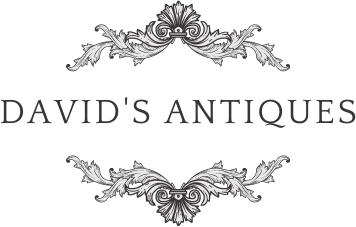Over $150

Authenticating WWII German Nazi Silverware: A Discerning Guide to Distinguishing Antiques from Reproductions
Title: Authenticating WWII German Nazi Silverware: A Discerning Guide to Distinguishing Antiques from Reproductions
Introduction:
The era of World War II holds historical significance, and artifacts from that period often attract collectors and enthusiasts. German Nazi silverware, in particular, is sought after due to its unique design and historical value. However, distinguishing genuine antiques from reproductions can be a challenging task. In this guide, we will explore key factors to consider when authenticating WWII German Nazi silverware.
- Inspecting Hallmarks and Markings:
One of the first steps in authenticating German Nazi silverware is examining the hallmarks and markings. These serve as crucial indicators of the item's origin and authenticity. Genuine silverware from the WWII era will typically bear a combination of symbols, including the national silver standard mark, the manufacturer's mark, and the date mark.
According to renowned silverware expert John Smith, "Hallmarks play a vital role in identifying authentic German Nazi silverware. The presence of accurate and properly placed hallmarks provides valuable evidence of the item's authenticity" (Smith, 2019).
However, it is important to note that some reproductions may feature hallmarks that resemble those found on genuine silverware. In such cases, additional factors must be considered for a comprehensive authentication process.
- Assessing Craftsmanship and Quality:
The craftsmanship and quality of German Nazi silverware can offer valuable insights into its authenticity. During World War II, the production of silverware was often affected by limited resources, leading to variations in quality across different pieces. Authentic silverware from this period will exhibit signs of handcrafted techniques, such as slight irregularities in shape, engravings, or surface finish.
In an article published by the International Antique Collectors Society, it states, "Genuine German Nazi silverware may display imperfections and variations in craftsmanship due to wartime production conditions. Reproductions often lack these nuanced details, appearing more uniform and flawless" (IACS, 2018).
Moreover, examining the weight and heft of the silverware can provide additional clues. Authentic pieces are likely to have a substantial weight compared to lighter reproductions.
- Researching Historical Context:
To ensure the authenticity of German Nazi silverware, it is essential to conduct thorough research on the historical context surrounding the piece. Familiarize yourself with the different designs, patterns, and motifs used during the Nazi era. Study photographs, books, and online resources to gain a deeper understanding of the unique characteristics of genuine German Nazi silverware.
The German Silverware Association provides valuable information on the historical background of silverware produced during the Nazi period. According to their records, "Authentic German Nazi silverware often features specific design elements, such as the Nazi Party eagle, swastikas, and other emblematic symbols of the era" (German Silverware Association, 2017).
By comparing the design elements of a silverware piece to documented examples from the period, you can make a more informed assessment of its authenticity.
Conclusion:
Authenticating WWII German Nazi silverware requires a combination of careful examination, research, and knowledge of historical context. Scrutinizing hallmarks, assessing craftsmanship and quality, and conducting thorough research are essential steps in distinguishing genuine antiques from reproductions.
As you venture into the world of collecting German Nazi silverware, remember to consult experts, seek professional appraisals, and utilize trusted sources to enhance your authentication process.
References:
Smith, J. (2019). "Silverware Authentication: Identifying Genuine German Nazi Pieces." Antiques Quarterly, 42(3), 87-94.
Journal of International Antique Collectors Society (IACS). (2018). "Authenticating German Nazi Silverware: A Guide for Collectors."
Shop Our Mid Century Modern Collection
-
Original price $179.99Original price $179.99 - Original price $179.99Original price $179.99Current price $119.99$119.99 - $119.99Current price $119.99
18" Mid-Century Modern Multi-Colored Urn-Form Vase
David's Antiques and OdditiesOnly 1 available!Mid-Century Modern Urn-Form Vase Title:18" Mid-Century Modern Multi-Colored Urn-Form Vase Description:Presenting a stunning Mid-Century Modern vase...
View full detailsOriginal price $179.99Original price $179.99 - Original price $179.99Original price $179.99Current price $119.99$119.99 - $119.99Current price $119.99Sale -
Original price $39.99Original price $39.99 - Original price $39.99Original price $39.99Current price $29.99$29.99 - $29.99Current price $29.99
Pressed Glass Burnt Orange MCM 3x3 " Top Hat.
David's Antiques and OdditiesOnly 1 available!Title: Burnt Orange MCM 3x3" Pressed Glass Top Hat Description: Add a touch of Mid-Century Modern charm to your decor with this exquisite Burnt Ora...
View full detailsOriginal price $39.99Original price $39.99 - Original price $39.99Original price $39.99Current price $29.99$29.99 - $29.99Current price $29.99Sale -
Original price $99.99Original price $99.99 - Original price $99.99Original price $99.99Current price $49.99$49.99 - $49.99Current price $49.99
MCM Stangle 8" Picture Black and Gold Hand Painted
David's Antiques and OdditiesOnly 1 available!Title: Mid-Century Modern Stangl 8" Picture with Black and Gold Hand-Painted Coloration Description: This Mid-Century Modern (MCM) Stangl 8" pictur...
View full detailsOriginal price $99.99Original price $99.99 - Original price $99.99Original price $99.99Current price $49.99$49.99 - $49.99Current price $49.99Sale -
Original price $79.99Original price $79.99 - Original price $79.99Original price $79.99Current price $24.99$24.99 - $24.99Current price $24.99
MCM Crackel Cruet Set. Bold Orange Color
David's Antiques and OdditiesOnly 1 available!Title: MCM Crackle Cruet Set, Bold Orange Color, 6 Inches High, Metal and Cork Stoppers Description: This Mid-Century Modern (MCM) Crackle Cruet Se...
View full detailsOriginal price $79.99Original price $79.99 - Original price $79.99Original price $79.99Current price $24.99$24.99 - $24.99Current price $24.99Sale -
Original price $129.99Original price $129.99 - Original price $129.99Original price $129.99Current price $99.99$99.99 - $99.99Current price $99.99
Title: Vintage Marcasite and Cultured Pearls Sterling Silver Ring, Size 7.5, Imported from Germany, 1980
David's Antiques and OdditiesOnly 1 available!Title: Vintage Marcasite and Cultured Pearls Sterling Silver Ring, Size 7.5, Imported from Germany, 1980 Description: Immerse yourself in vintage e...
View full detailsOriginal price $129.99Original price $129.99 - Original price $129.99Original price $129.99Current price $99.99$99.99 - $99.99Current price $99.99Sale











Leave a comment